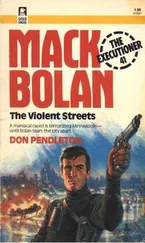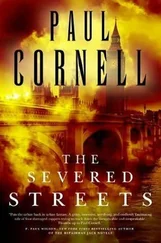“Sixty-four forty,” says Worden, interrupting.
“Sixty-four forty.”
“I know it’s a homicide. I want someone from TIS down here for their expertise.”
“Ten-four,” says the traffic man, cutting back in. “I’ll be out there in a few minutes.”
Unbelievable, thinks Worden, a perfect illustration of the not-my-job reflex. Traffic section handles any auto fatalities, including hit-and-runs, so they are reluctant to send a man down if it means they might get stuck with the case. McAllister and Bowman encountered something similar back in March when they called for traffic while working a body found mauled by the shoulder of Bayonne Avenue in the Northeast. The detectives were walking around that scene looking for chrome and paint chips; the traffic man was looking for shell casings.
“Did you catch that?” asks Worden, almost amused. “That guy wasn’t going to come down here until he heard me say it was a homicide.”
Dave Brown doesn’t answer, preoccupied with the change in scenario. Death-by-auto requires an entirely different perspective, though neither detective believes that this was an accident. For one thing, the body is on a vacant gravel lot and was run over not ten feet from the concrete wall of the loading dock: It’s hard to imagine a car whirling around in such a confined area for no reason. More important is the missing sandal. If the dead woman was a pedestrian, if she was merely the victim of a hit-and-run, then why wouldn’t that other sandal be somewhere on the lot? No, the detectives reason, she wasn’t a pedestrian; she arrived at the scene in the car that killed her, and chances are she had to get out of that car in a hurry, leaving behind one of her shoes.
On a closer inspection of the body, Worden also notices bruising in the approximate shape of fingers on both forearms. Was she grabbed? Was she attacked before the killer got back in the car and finished her? And the earrings: Were they pried out by the movement of the tire over her head, or were they pulled from her ears in an earlier struggle?
Freed from his fears about being saddled with the case, the TIS sergeant arrives a moment later and, after examining the treadmarks on the dead woman, begins waxing eloquent on radial tire design and the myriad distinctions between manufacturers. Before his brain turns to yogurt, Dave Brown interrupts the discourse.
“What do you think hit her?”
“Hard to say. But that tread would be most common on a sports car. A Two-eighty Z.A Camaro. Something along those lines.”
“Nothing bigger?”
“Maybe a little bigger, but I’m saying it would have to be in that same class of sports cars. Those are like a high-performance tire, like you want for a car that’s riding low to the ground.”
“Thanks,” says Worden.
“You got it.”
Dave Brown squats down on his haunches to scan the treadmarks closely.
“No question it’s a murder, Donald,” he says. “No question in my mind.”
Worden nods agreement.
But the drivers sleeping in the tractor cabs at the opposite end of the lot heard nothing; nor did the railroad workers at the yard office across the tracks remember any noise or headlights. Worden talks to the sector sergeant and learns that at about four A.M.-little more than two hours before the discovery of the body-there was a fire alarm at the warehouse. Trucks and engines from the Fort Avenue and Light Street stations drove right onto the gravel lot, confirmed the absence of any flame or smoke, and then drove off-presumably without noticing the body. Either she was killed after four o’clock or half the fire department all but drove over the corpse. On second thought, Worden muses, maybe they did that, too.
News of the fire alarm makes both detectives realize that half their crime scene has already been destroyed. If the weapon is an automobile, treadmarks are important, and on a mud and stone lot such marks should be easy enough to find-provided, of course, that a convoy of fire trucks didn’t get a chance to roll across the scene, not to mention a half dozen radio cars, every last one of which made a point of pulling to within feet of the body. Dave Brown could spend a month matching tire prints to eliminate every vehicle that had been on the lot. Hoping for something easier, he checks the white cement of the loading dock and the scarred metal of a Dumpster, looking for fresh scrapes and dents.
“It’s a tight spot,” he says, hopeful. “Wouldn’t it be great if the guy clipped a fender while rolling around in here?”
It would be manna from heaven, but even as he speaks, Brown knows that the only physical evidence he has is the body itself. And depending on what happens in the autopsy room in two hours, he may have precious little of that. Contrary to his initial expectations, Johnson Street was turning out to be a stone whodunit; Billyland was turning out to be no fun at all.
After the body has disappeared into the rear of the black van, the two detectives walk back up to the lot’s Johnson Street entrance, where a crowd of onlookers has collected over the last two hours. A younger woman waves Dave Brown aside and asks for the name of the victim.
“We don’t know yet. We don’t have any ID.”
“Was she in her forties?”
“Younger. Much younger, I think.”
As the detective fights to remain patient, the woman slowly explains that her aunt left their home on South Light Street late last night and hasn’t been seen since.
“We don’t know who she is yet,” Brown repeats, handing her his business card. “If you want to call me later in the day, I’ll probably have something more.”
The woman takes the card and opens her mouth with another question, but Brown is already in the driver’s seat of the Cavalier. If the case was an ordinary shoot-’em-up, one of the detectives would be peeling off to work on the identification and interview relatives. But this case, more than most, hinges on the postmortem.
Brown guns the motor and races the Cavalier up South Charles Street; fifty miles an hour for no apparent reason. Worden looks at him.
“What?” asks Brown.
Worden shakes his head.
“What’s the matter with you? I’m a police. I’m allowed to drive like that.”
“Not with me in the car.”
Brown rolls his eyes.
“Go by the Rite Aid upon Baltimore Street,” says Worden. “I need cigars.”
As if to make his point, Brown guns the motor again and catches every light across downtown. At Calvert and Baltimore, he double parks outside the drugstore and gets out of the driver’s side before Worden can react. He waves off the older detective and returns a minute later with his own brand of cigarettes and a soft pack of Backwoods.
“I even got you one of them pink lighters you like so much. The bigger size.”
A peace offering. Worden looks at the lighter, then back at Dave Brown. They are both large men, both squeezed beyond all dignity into the cramped interior of a two-door economy sedan. They are flesh under pressure in that car, a vision of cluttered humanity that somehow increases the comedic possibilities.
“They say it takes a big man to carry a pink lighter,” says Brown. “A big man or a man familiar with alternative lifestyles.”
“You know why I need the bigger size,” says Worden, lighting a cigar.
“Because you can’t get them fat stubby fingers around one of the little ones.”
“That’s right,” says Worden.
The Cavalier bumps its way through the potholes and metal plates of Lombard Street in the late morning traffic. Worden blows smoke out the window and watches secretaries and businessmen coming out of office buildings for an early lunch.
“Thanks for the cigars,” he says after a block or two.
Читать дальше












